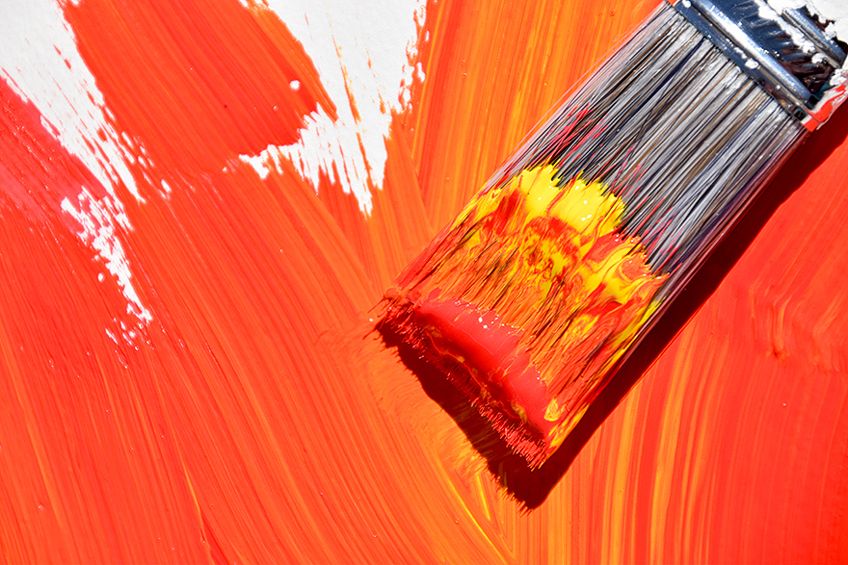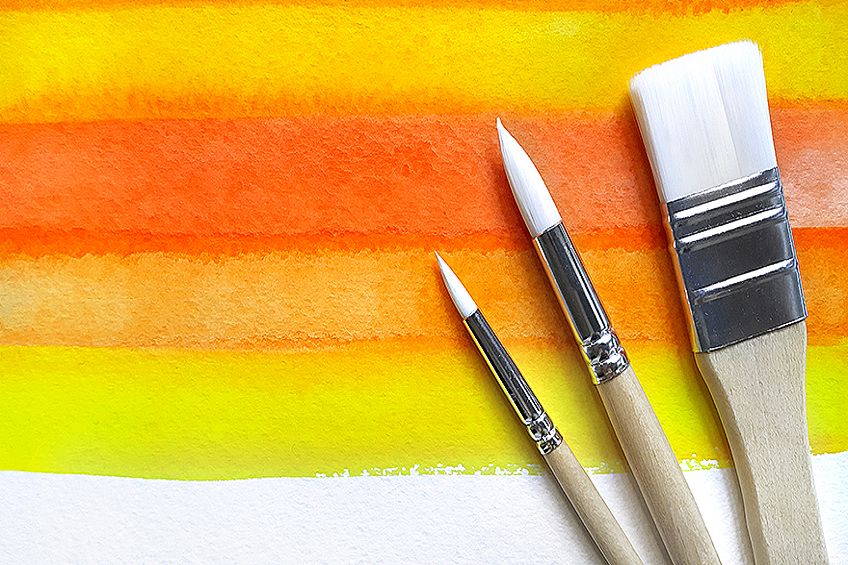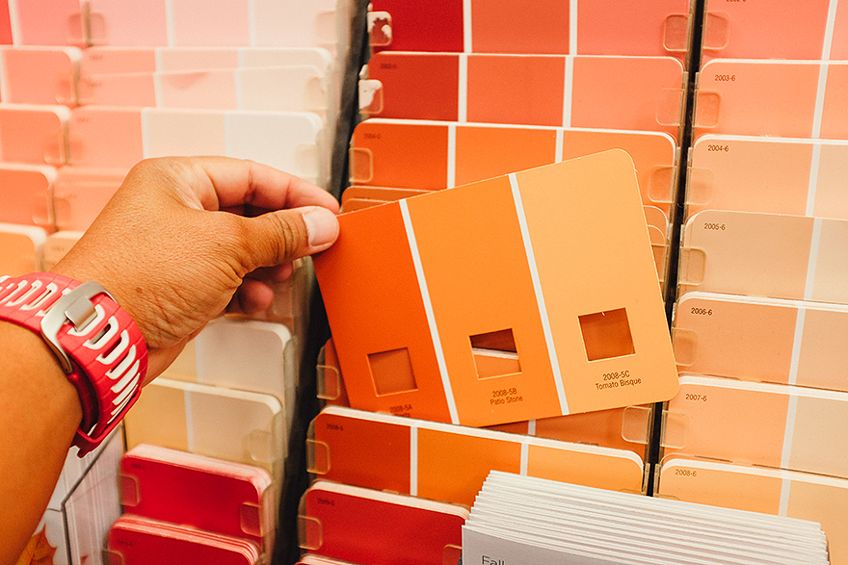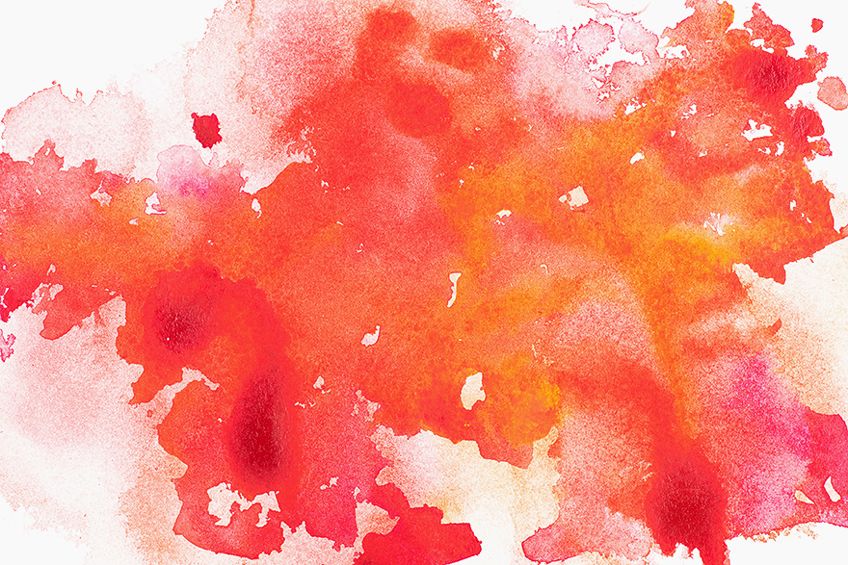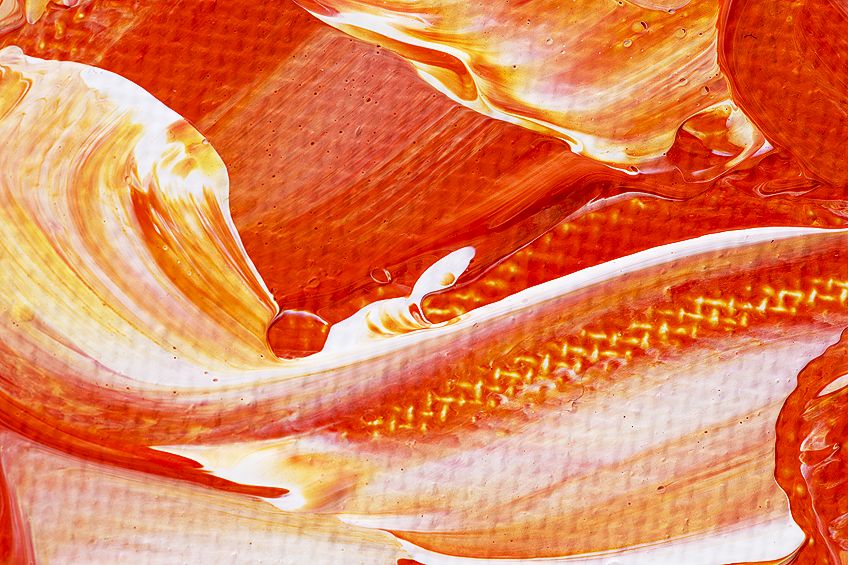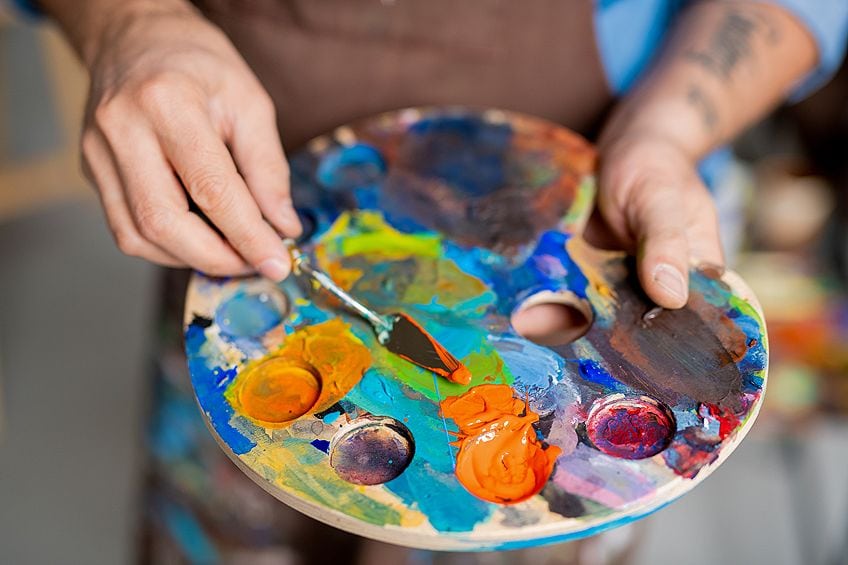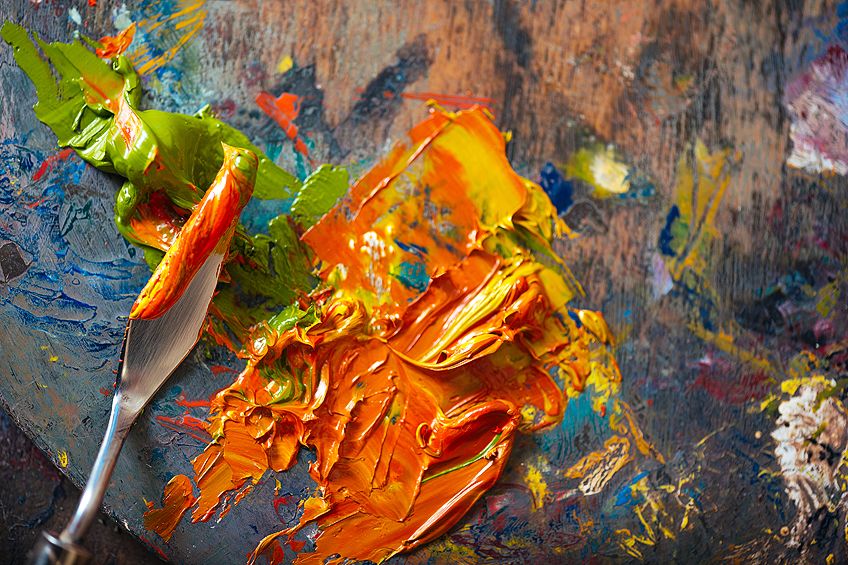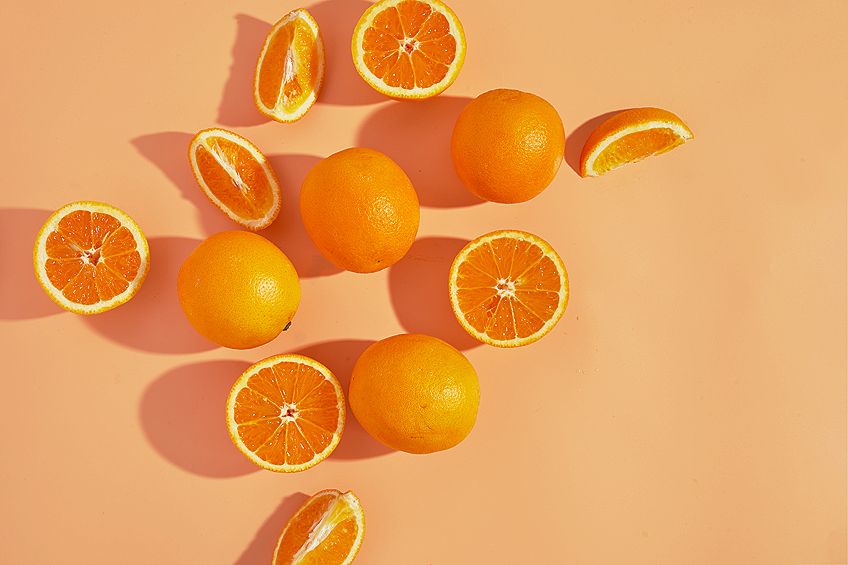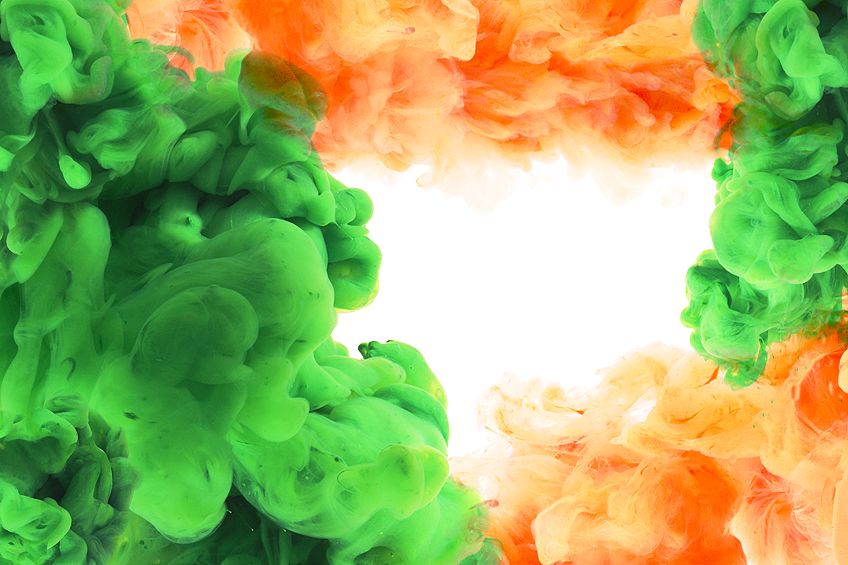What Colors Make Orange? – Explore the Different Shades of Orange
Orange has always been a particularly popular hue among painters throughout history. In certain cultures, orange is considered a sacred color, while in others, it is associated with the monarchy. But what colors make orange? This article includes the answer to this question. We will also discuss how to make orange, the different shades of orange, and everything else that you need to know about this color.
The History of Orange
For a long time, the color orange has been a staple in fashion and design. However, it was not always referred to by the name that it is known by today. Colors were made of powdery minerals and later on, they were used for painting. The difficulty was that many of these minerals were hazardous, having been contaminated with elements such as arsenic.
For a long time, orange was referred to as “yellow-red” throughout Europe until the 15th century, when it was officially designated as “orange.” Excellent painters throughout history, such as Monet and a handful of others, have managed to incorporate varied colors of orange into their work.
Realgar, a mineral found in Ancient Egypt, was utilized to create the murals seen in tombs. As a toxin, it was also used as a form of medication by the Chinese, who considered it to be beneficial to their health. The Ancient Romans were particularly fond of a toxic mineral known as Orpiment, which was utilized to produce a yellowish-orange color that looked virtually identical to gold.
| Shade | Color Name | Hex Code | RGB Code |
| Orange | #FFA500 | (255, 165, 0) |
Symbolism and Psychological Effects
Orange is often associated with sentiments of warmth and pleasure, making it a favorable color in most circles. In addition, the hue elicits feelings of excitement, energy, movement, and pleasure in the viewer. Orange colors are available in a variety of shades and hues, ranging from vivid oranges to softer hues such as coral and ochre.
Additional connections that may be made with the color orange include fun, creativity, freedom, joy, success, and enthusiasm.
Different tints of orange may have a variety of symbolic implications as well. For example, vibrant orange hues might be associated with enthusiasm and taking action, yet a somewhat golden orange color can be associated with wealth, knowledge, and superiority of workmanship. Darker orange hues, on the other hand, might be seen as a sign of suspicion. Lighter orange tones are calming and provide feelings of kindness and trust.
The color, brightness, and chroma, as well as the accent or value of different shades of orange, may differ. When deciding on the perfect orange hue for your project, it is important to consider the reaction or impact you want to produce with it. This will help you in creating the shade of the color that you want.
What Two Colors Make Orange?
Orange is a secondary color. This indicates that it is a result of the mixture of two primary colors. Yellow and red are the two colors that combine to form orange. When these two colors are combined in equal rations, the result is the color orange.
When more yellow is added, a lighter orange is created. However, if you add additional red to the mix, you get a darker shade of orange. So, you can easily generate multiple shades of orange by just varying the quantities of the colors that are used in the mix.
When learning about the many colors that make up orange, you may experiment with basic tints such as yellow-orange, which is just two parts yellow and one part red mixed together.
Various shades of yellow and red may also be utilized to create a plethora of other options to use in your artworks. For instance, if you would like to create a burnt orange shade, you can pair cadmium red with deep red.
| Shade | Color Name | Hex Code | RGB Code |
| Red | #FF0000 | (255, 0, 0) | |
| Orange | #FFA500 | (255, 165, 0) | |
| Yellow | #FFFF00 | (255, 255, 0) |
Other Colors That Make Orange
Aside from the main colors, there are a variety of different colors that may be used to create the color orange. Colors such as green and red could be combined to form yellow, and then some red could be applied to the yellow to form orange.
When working with colors, a color wheel is a useful tool for understanding how they may be combined to produce as many distinct colors as needed.
Colors are classified according to their tint, shade, or hue, which define their brightness or darkness, respectively. By using brighter or darker hues in a painting, you may create additional depth and complexity in the artwork.
Creating a dark shade of orange is easy, as you can simply do it by just adding a small amount of black to the orange. One must use caution, though, since overdoing it with the black may be quite difficult to reverse.
Green is often used as a basis hue for black colors, which might result in undesirable brownish-orange tones. The usage of orange’s complementary color, blue, may help to resolve the problem, though the quantity of color utilized and how it is used will always be dependent on the situation.
Aquamarine, navy, ultramarine, and cobalt blue are just a handful of the many diverse shades of blue available.
Different Shades of Orange
Orange is a motivating color that is full of passion and optimism. It is used to alert people about dangers, capture their attention, and to stimulate their creativity. There are several shades of orange that can be used in artworks, as well as in interior design. The following are the common shades of orange.
Vermilion
The vermilion pigment was initially created by grinding powdered mercury sulfide, popularly known as cinnabar, into a fine powder. As a result of the mercury content in this, it was very dangerous, and several people who worked to extract it perished as a result of their efforts. Fortunately, the hazardous pigment was quickly replaced with synthetic pigments such as cadmium red, which has a hue that is quite close to the original.
| Shade | Color Name | Hex Code | RGB Code |
| Vermilion | #e34234 | (227, 66, 52) |
Burnt Orange
Originally coined in 1915, burnt orange is a deeper orange hue that has become more popular. It is possible to relate this hue with autumn, fire, comfort, and togetherness. There are also negative connotations associated with it, such as arrogance and stubbornness.
| Shade | Color Name | Hex Code | RGB Code |
| Burnt Orange | #cc5500 | (204, 85, 0) |
Papaya Whip
Despite its unusual name, this color is a combination of orange and brown. Even though the combination produces an incredibly light orange hue, there are several variations of this exact orange color available. Whenever the hue is utilized in advertisements, it is intended to trigger positive emotions such as friendliness and wellness. It can also be connected with a person’s home or trip. Its complementary hue is paction blue, which has the hex code #35b1e6.
| Shade | Color Name | Hex Code | RGB Code |
| Papaya Whip | #ffefd5 | (255, 239, 213) | |
| Paction Blue | #35b1e6 | (53, 177, 230) |
Tangerine
Tangerine is a bright and cheerful hue that gets its name from the tangerine fruit. The vibrant and intense orange hue is connected with vitality and youthfulness, and it can have an exhilarating impression on the viewer. This shade of orange is mostly used to help increase the appetite, making them excellent choices for marketing campaigns. Use of this shade as an accent color in conjunction with neutral colors like gray and cream may be quite effective.
| Shade | Color Name | Hex Code | RGB Code |
| Tangerine | #f78702 | (247, 135, 2) |
How to Make Orange
On the surface, creating an orange color is as easy as blending the colors red and yellow. Everything becomes somewhat harder when trying to figure out how to combine multiple orange tones. It all comes down to what kind of orange you want to create, whether it be a vibrant orange or a dark orange.
What determines the solution is the color combinations of red and yellow that you select to use. This section explains the fundamentals of color theory to help you create any shade of orange with confidence.
Three separate color classes are shown on the color wheel; they are referred to as tertiary, secondary, and primary colors. Primary colors are those colors that are not created by mixing other colors. On the other hand, a mixture of two primary colors results in a secondary color.
Orange is a secondary hue that may be created by blending a yellow color with red in equal ratios. Even though a single color, there are a plethora of various tints and tones available. Having a basic grasp of color bias can help you create variations in orange colors effectively.
Getting the ideal hue of orange is not that simple. This is because there is a substantial variance in the warmth of the colors. Some hues are rich and deep, while others are nearly orange in appearance. Yellows tend to tilt toward green in certain cases, while others lean toward orange in other cases. You will need to use extreme care to get the exact hue that you are searching for.
Two colors may be used in a bright container. The addition of three colors causes the mixture to become muddy. When the color red is paired with a cold yellow, the resulting suit is a muddy orange in appearance. This is because blue there is blue in these colors.
Warmer or Cooler Shades of Orange
Colors such as blue and green are often used to create colder hues, whereas colors like orange, yellow, and red are used to create warm tones. Having said that, some colors of yellow and red may be made to seem cooler by mixing in a little blue, which helps to reduce the intensity of the orange.
Yellow and red may be used to create brighter and more spectacular variants of orange by combining them with other colors.
Combining cadmium red with cadmium yellow is the most effective approach to get a true warm color. Simply mixing a shade like lemon yellow with orange can produce a cooler orange hue. Additionally, green may be used to create a cooler, more subdued orange hue. Phthalo green works better for this compared to other shades of green. Make sure to add modest quantities of green to the orange if you would like to achieve a cooler shade.
Small quantities of the colors black or blue may be used to darken orange to get the desired shade.
The blue will provide a deeper hue that is more vibrant than the black, which may result in a bland orange. Choose a color that is immediately opposite your unique orange hue from the numerous shades of orange and blue available. A blue-violet may be used on a yellow-orange, and a blue-green can be used to deepen a red-orange.
| Shade | Color Name | Hex Code | RGB Code |
| Black | #000000 | (0, 0, 0) | |
| Blue | #0000ff | (0, 0, 255) | |
| Blue-Violet | #8a2be2 | (138, 43, 226) | |
| Blue-Green | #0d98ba | (12, 186, 166) | |
| Red-Orange | #ff4500 | (255, 83, 73) | |
| Yellow-Orange | #ffae42 | (255, 174, 66) | |
| Cadmium Orange | #ed872d | (237, 135, 45) |
Creating Muted Shades of Orange
When working with the color orange, there are numerous instances in which you may be looking for a completely different hue from what you already have on hand. The use of muted orange colors may be appropriate in certain situations. As a result, it is equally crucial to understand how to create muted orange.
There are a variety of techniques for either mixing a muted orange or muting an orange that you already have on hand.
To get a muted shade of orange, you must use a color that contrasts or complements the orange hue. Look at the color that appears opposite it on the color wheel to figure out what color it is. The complementary color of orange is blue; therefore, you can use this to mute orange.
Many shades of green can also be used for muting orange. Simply experiment with several colors to determine which one works best for the color you want.
Muting Orange with Green
On the color wheel, you will notice that one of the colors near blue is green. As a result, it might be considered a complementary color to orange to some extent. Use green to create a variety of gorgeous shades of muted orange, ranging from deep to bright hues.
The greater the number of color changes you can achieve, the more realistic and three-dimensional your painting will seem.
For example, combining cadmium orange with phthalo green shade results in a chilly and gloomy orange shade, however, utilizing Veronese green will result in a much softer shade of muted orange than the previous combination. The combination of cadmium orange and cadmium green will result in warm subdued tones of orange.
| Shade | Color Name | Hex Code | RGB Code |
| Veronese Green | #009b7d | (0, 155, 125) | |
| Phthalo Green | #123524 | (18, 53, 36) | |
| Cadmium Orange | #ed872d | (237, 135, 45) |
Muting Orange with Blue
Blue is the greatest color to use when making a subdued neutral orange. Blue comes in different shades and you can choose any shades based on the color you want to achieve. The temperature difference between your blue and orange will affect the result of your orange, thus there is a lot of room for experimenting.
The use of a warm blue, such as cobalt blue, will result in a warm, but subdued, orange hue. Use a cool blue, such as ultramarine blue, for your muted orange, and your muted orange will be a little cooler as well.
| Shade | Color Name | Hex Code | RGB Code |
| Cobalt Blue | #0047ab | (0, 71, 171) | |
| Ultramarine Blue | #4166F5 | (30, 54, 123) |
Tips and Tricks for Mixing and Using Orange
Orange is a vibrant color that looks good in paintings. However, to make orange, you must understand how to correctly blend the hues. This will assist you in bringing more life, brightness, and depth to your paintings. When it comes to mixing and applying orange to paintings, there are a few things to remember to make things simple.
When mixing and muting colors, the temperature of the colors must be taken into account. If you want to generate orange, be sure to choose warm colors like red and yellow since these are the colors that lean towards orange.
Even though orange is often thought of as a warm hue, there are cooler versions that may be created by combining cooler primary colors with warmer secondary colors.
Tracking your color experiments by documenting the composite colors may be very useful for future reference and is highly recommended. There is almost no limit to the number of color changes that can be achieved with orange, and each hue imparts a little distinct emotional ambiance in your work.
A fantastic technique to be able to duplicate your shades is to construct a color chart to examine your hues, and to write down the procedures you used to generate them. Furthermore, when you are mixing colors, you should only use a small quantity of each hue since a little bit makes a big difference. When you use too much color, it’s generally really tough to remove it.
Knowing what colors combine to form orange may be beneficial and can save you a lot of time. This allows you to have a fuller knowledge of the color theories. Because of this, you will be able to apply your expertise to create various shades of the colors that you are looking for in your artwork. We hope that this article was helpful in providing you with all of the information you were looking for on the colors that make up orange.
Frequently Asked Questions
What Color Complements Orange?
On the color wheel, blue lies directly opposite orange. As a result, blue is considered to be the complementary color of orange. You may combine these two colors to make them appear more muted or to increase the contrast between them. These colors also make each other appear bright and vibrant. It is possible to create a variety of distinct shades of orange, each of which will be complemented by a certain shade of blue.
What Two Colors Make Orange?
Orange is made by mixing the two primary colors yellow and red. Different shades of orange can also be created by using several shades of yellow and red.
How to Make Red Orange?
Learning how to make red-orange is quite simple. Only red and yellow are required; however, the red must be used in a greater proportion than the yellow. Thus, one part yellow and two parts red may be combined to create a red-orange color. Alternatively, if you wish to make a yellow-orange color, the yellow must be in a larger proportion (two parts) than the red (one part). You may also make red-orange by combining equal amounts of red and orange.
How to Make Dark Orange?
Knowing how to make dark orange is essential if you do not want to use bright orange shades. To make the dark orange color, warm blue or ultramarine blue should be added to the orange. You may also apply a small amount of black to get the desired effect. However, adding an excessive amount of black might result in a drastic hue shift. In a similar vein, using too much blue may cause the color to shift dramatically since they are complementary hues.
How to Make the Color Orange Pop?
Pairing orange with its complementary color will help to make it more noticeable. On the color wheel, the color that appears opposite orange is blue. This hue will make orange stand out more readily since it helps it seem more vibrant. In a similar vein, the color orange will make the blue stand out even more. Different shades of orange also have their own complementary colors. The color indigo-blue, for example, is the complementary hue to the color red-orange.
Megan is a writer and researcher who holds a degree in Social Sciences, with a specialization in Psychology and Environmental Science, from the University of Cape Town. Her dedication to acquiring knowledge and making a positive impact has driven her current work in promoting conscious and sustainable growth in Southern Africa. Megan’s interests encompass exploring the physical and psychological impacts of color in our environment on our mood and well-being. She is also passionate about the role of art and creativity, which has been an integral part of society since the beginning of human history. Since 2022, Megan has been contributing blog posts on painting and color theory at artfilemagazine.
Learn more about Megan van Schoor and about us.
Cite this Article
Megan, van Schoor, “What Colors Make Orange? – Explore the Different Shades of Orange.” artfilemagazine – Your Online Art Source. February 11, 2022. URL: https://artfilemagazine.com/what-colors-make-orange/
van Schoor, M. (2022, 11 February). What Colors Make Orange? – Explore the Different Shades of Orange. artfilemagazine – Your Online Art Source. https://artfilemagazine.com/what-colors-make-orange/
van Schoor, Megan. “What Colors Make Orange? – Explore the Different Shades of Orange.” artfilemagazine – Your Online Art Source, February 11, 2022. https://artfilemagazine.com/what-colors-make-orange/.



